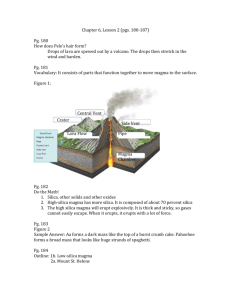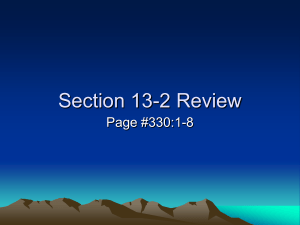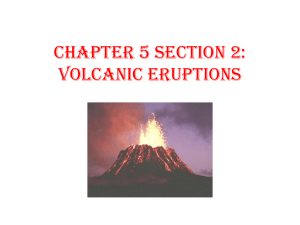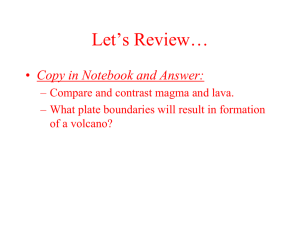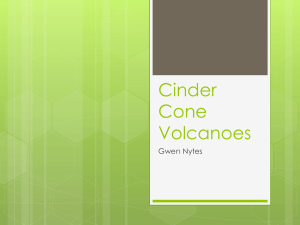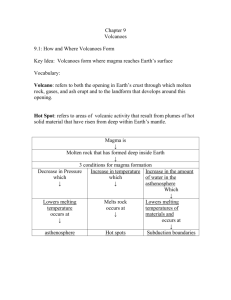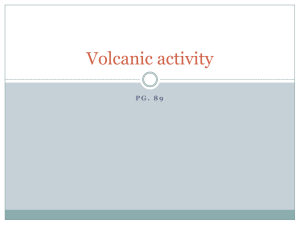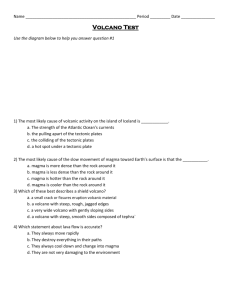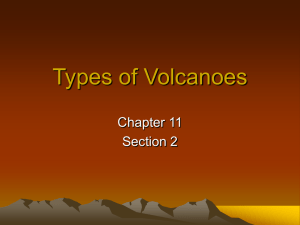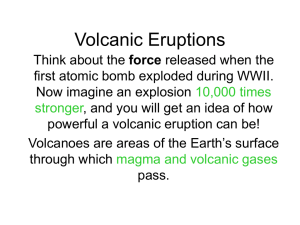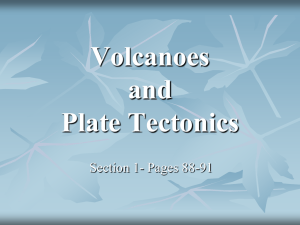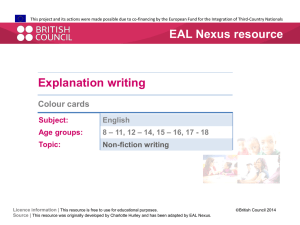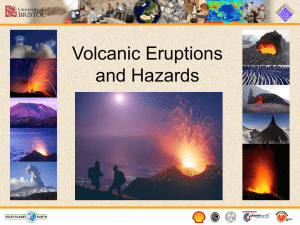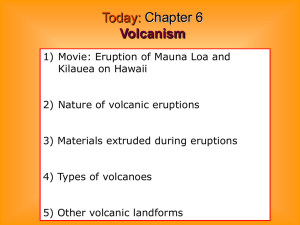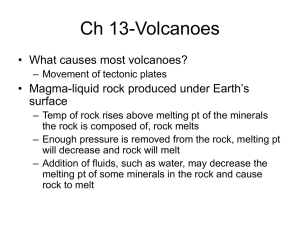10.1 The nature of volcanic eruptions
advertisement
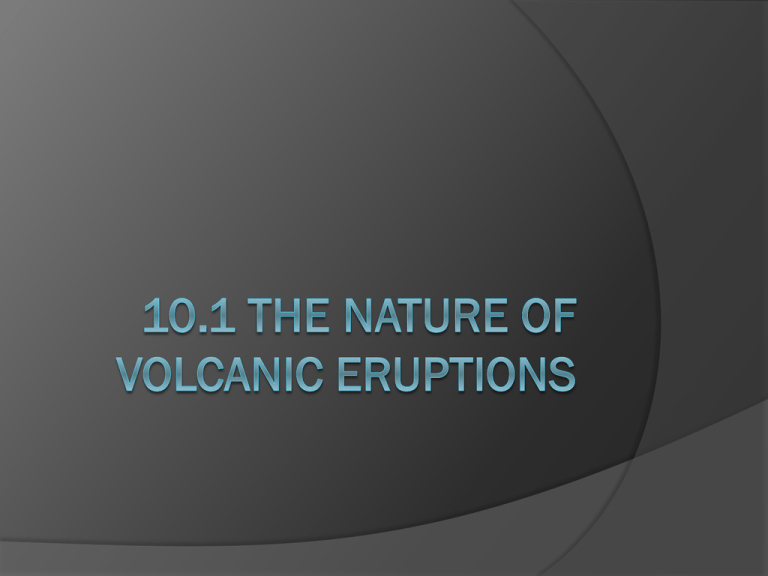
What causes a Volcano? Volcanic activity often starts when a crack develops in the crust. Magma is then forced toward the surface. Repeated eruptions of lava or pyroclastic materials eventually build a mountain which is called a volcano Factors Affecting Eruptions The primary factors that determine whether a volcano erupts violently or not include: Magma Composition Magma Temperature Amount of dissolved gasses in the magma Viscosity – is a substance’s resistance to flow Ex- Syrup is thicker than water Magma from a more explosive volcano can be 1000x more viscous than that of a “quieter” volcano Higher Temperature = less viscous Lower Temperature = more viscous (hardens) = mobility decreases More Silica in magma = higher viscosity Dissolved Gases Gases are mostly water vapor and CO2 As magma gets closer to the surface, the pressure of the magma is reduced, which allows for the dissolved gases to be released Volcanic Material Lava Flows Depends on silica content ○ High silica = harder to flow ○ Low silica = more fluid like Gases Pyroclastic Materials Particles that are produced in a volcanic eruption Fragments ejected during an eruption range in size from extremely fine dust & ash to pieces that weigh several tons Types of Volcanoes Shield Volcanoes Cinder Cones Composite Cones Shield Volcanoes Produced by the build up of fluid basaltic lava Shape = broad & slightly domed Have “grown up” and from the sea floor and have formed islands Examples: Hawaiian Islands & Iceland Cinder Cones Cinder cones are built from ejected lava fragments which harden in the air Fragments range in size Typically a result of gas rich basaltic magma Composed mostly of Pyroclastic material Occasionally releases lava Shape: simple & smaller; determined by the steep sided slopes Usually the result of a single eruption that lasts only a few weeks and very rarely more than a few years The eruption only occurs once due to the fact that the pipe connecting the vent to the magma chamber hardens Composite Cones Large & symmetrical Composed of layers of lava & pyroclastic material Viscous lava (travel short distances) Beautiful & possibly the most dangerous Located in a narrow zone along the Pacific Ocean “Ring of Fire” Other Volcanic Landforms Calderas – a large depression in a volcano Form in 1 of 2 ways: collapse of the top of a shield volcano OR collapse of the top of a composite volcano Necks & Pipes In most volcanoes, magma travels through pipes that connect the magma chamber to the surface Lava Plateaus The greatest volume of material comes from fissures Basaltic lava flows from the fissures (which covers a large area) Resources http://video.nationalgeographic.com/vide o/101-videos/volcanoes-101 http://discoverykids.com/games/volcanoexplorer/ Sources Google Prentice Hall Earth Science Book National Geographic Discovery



